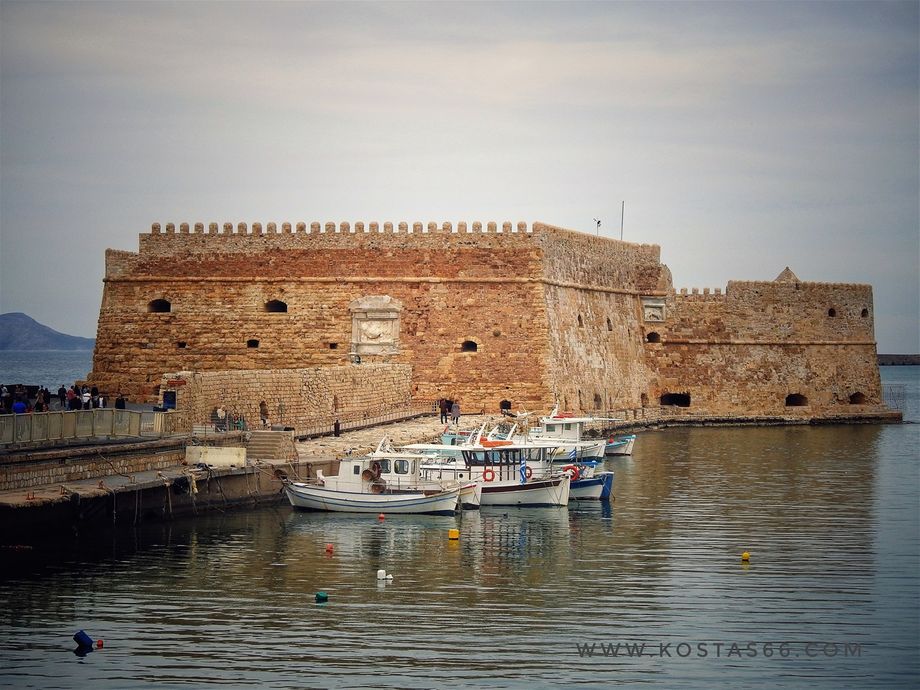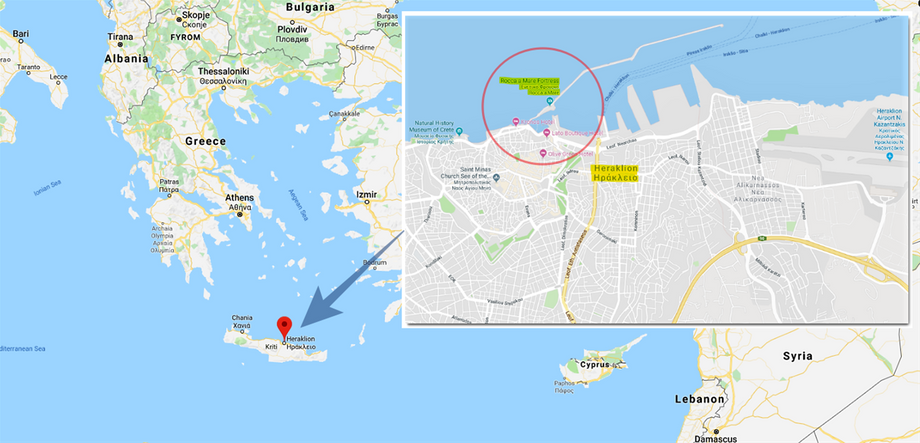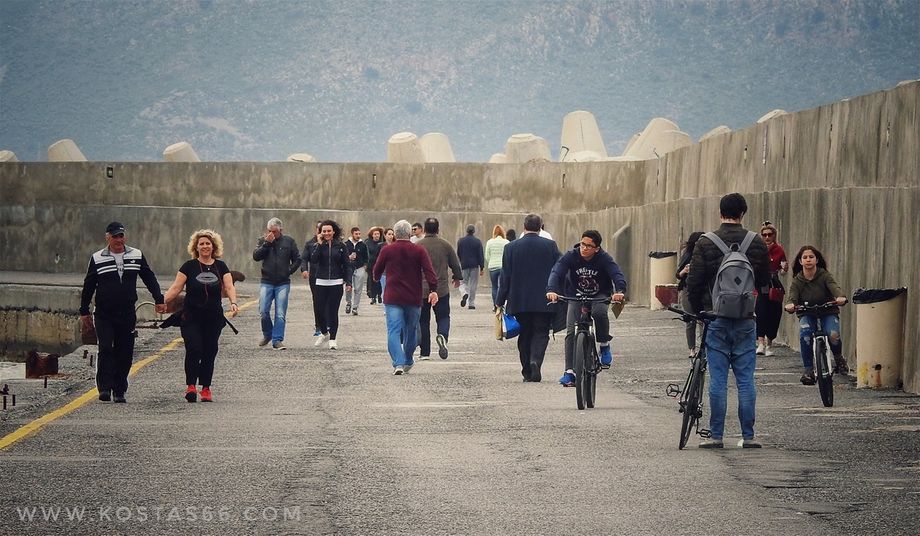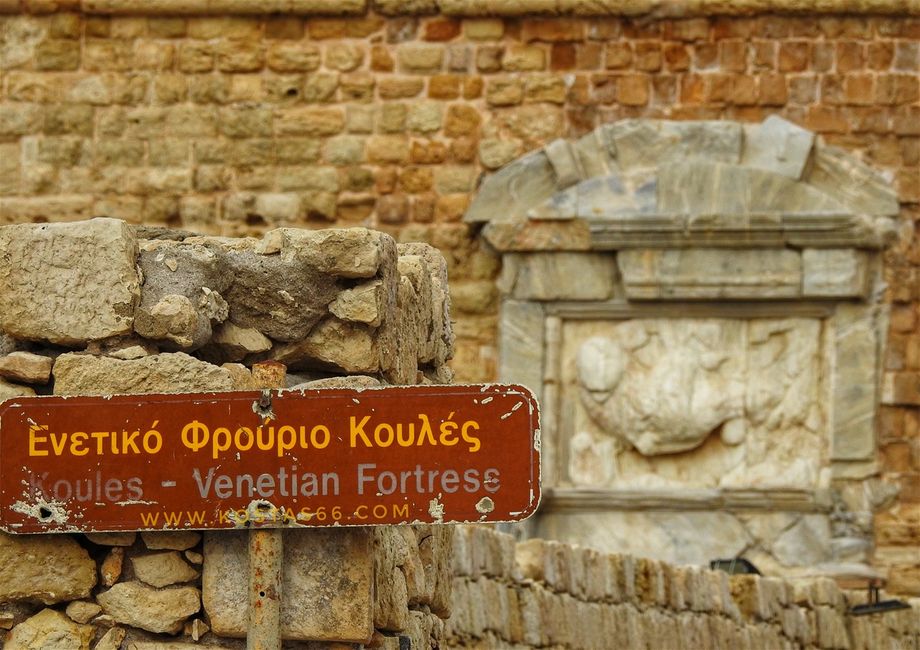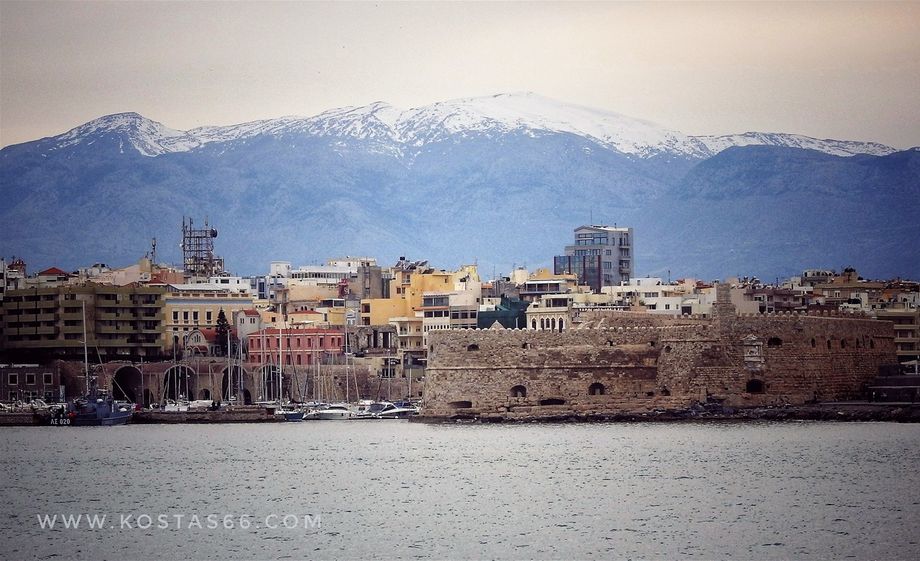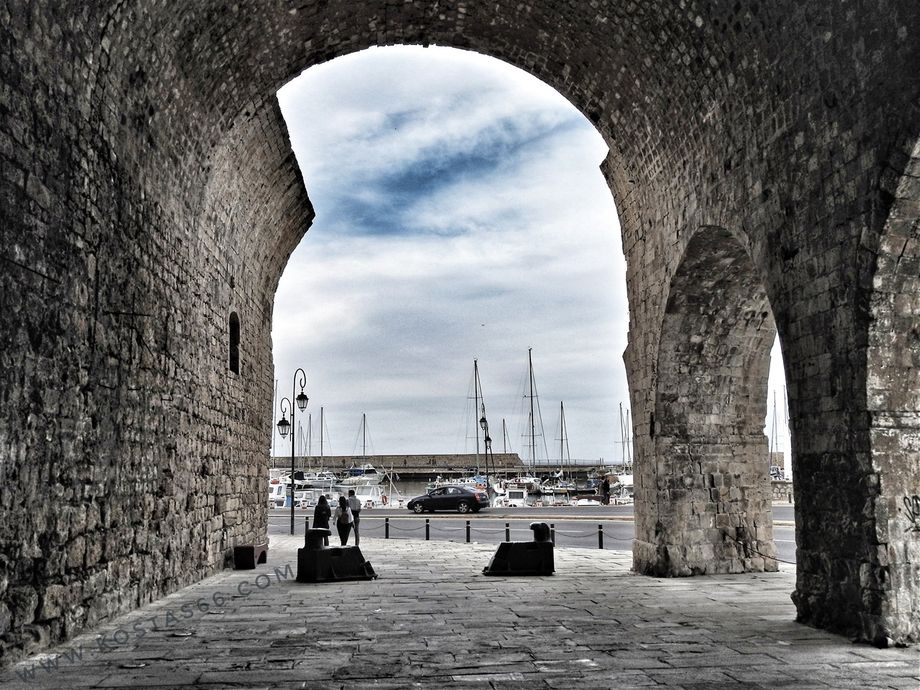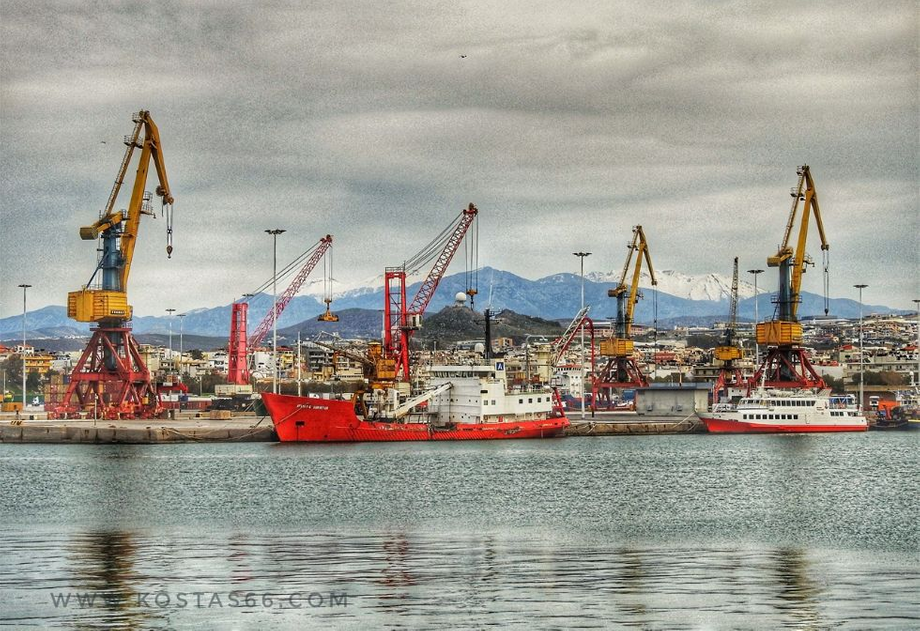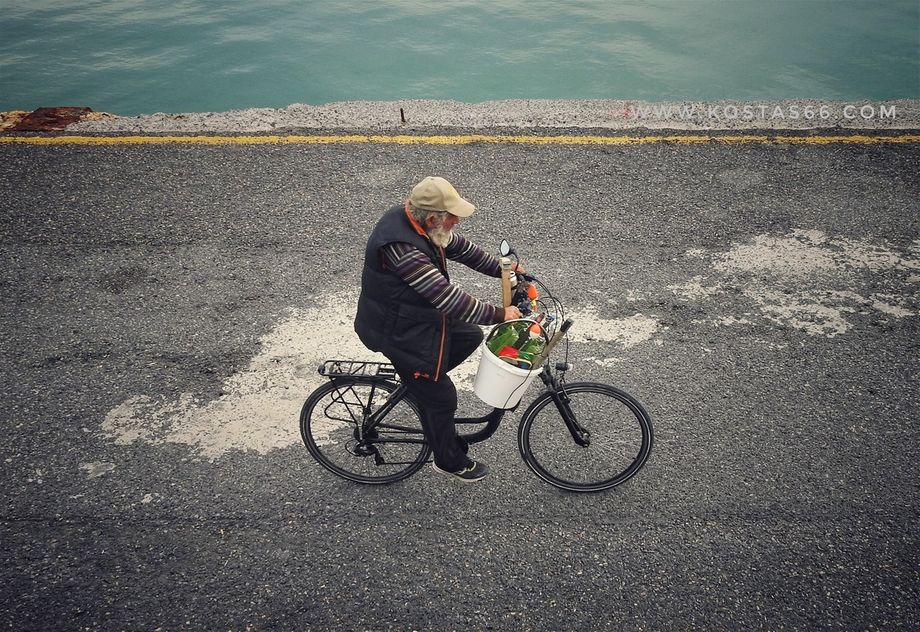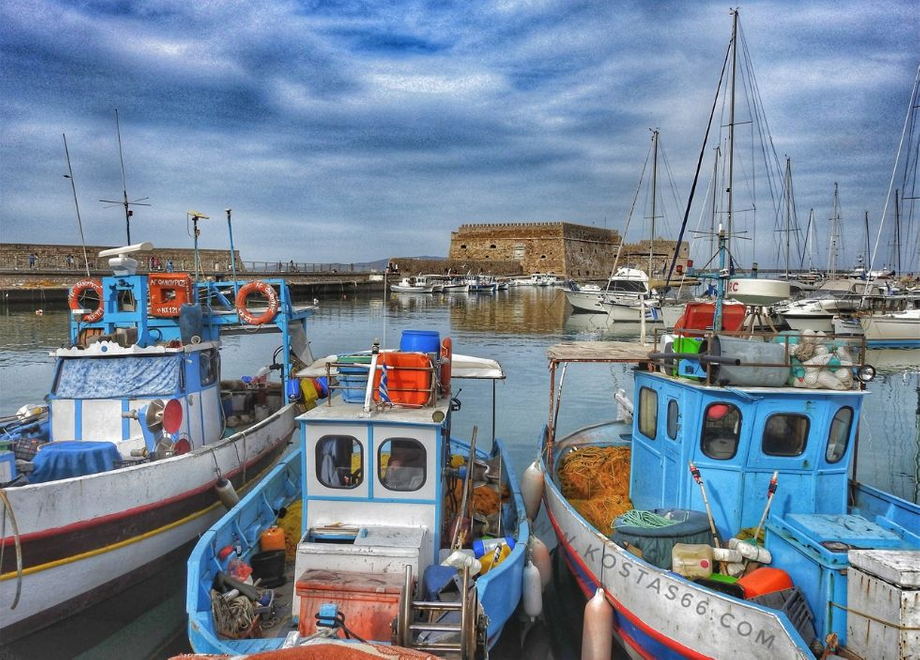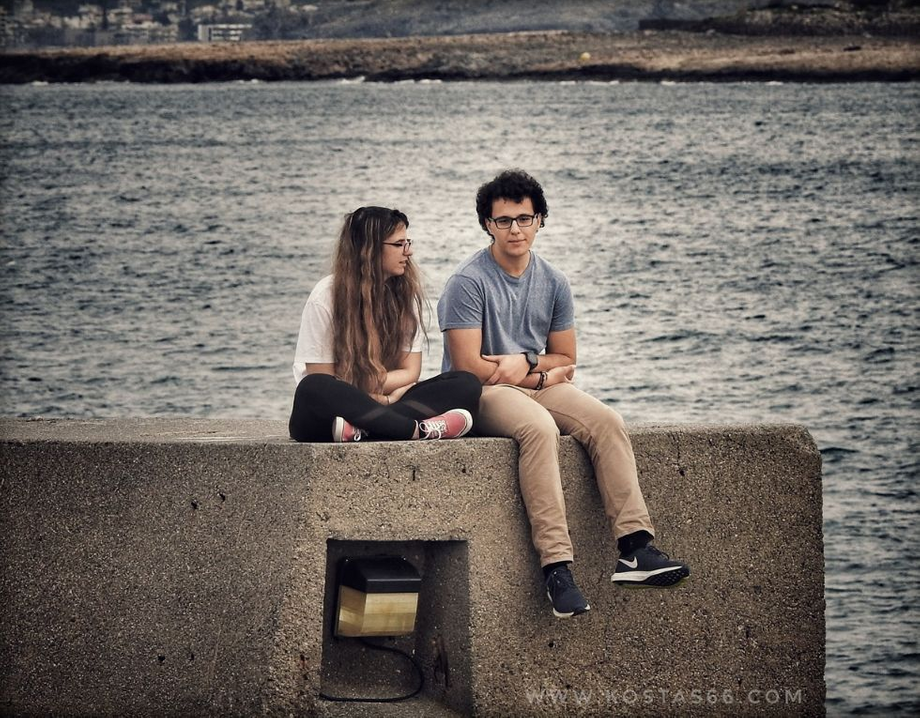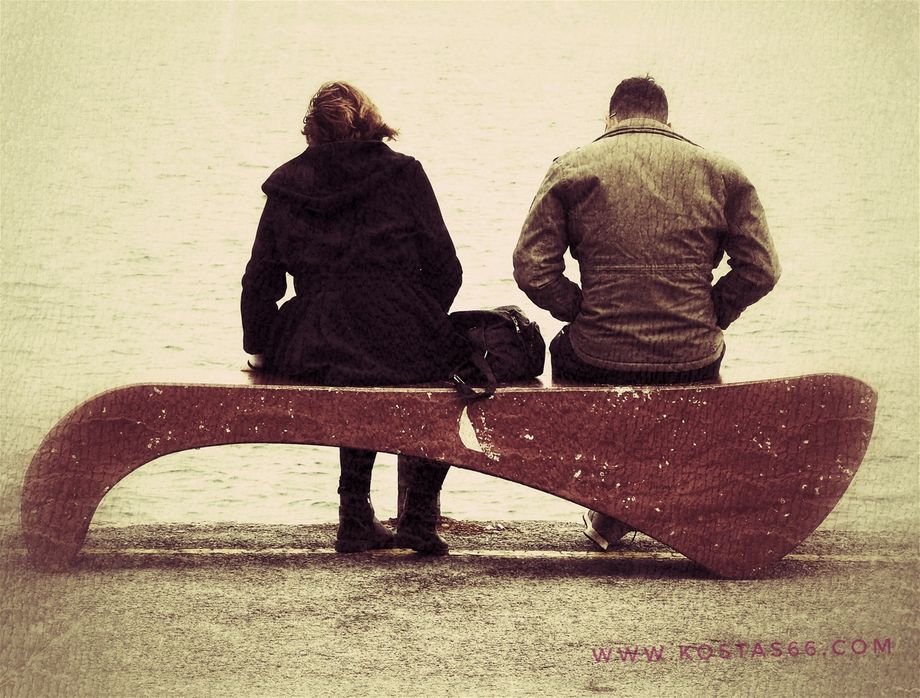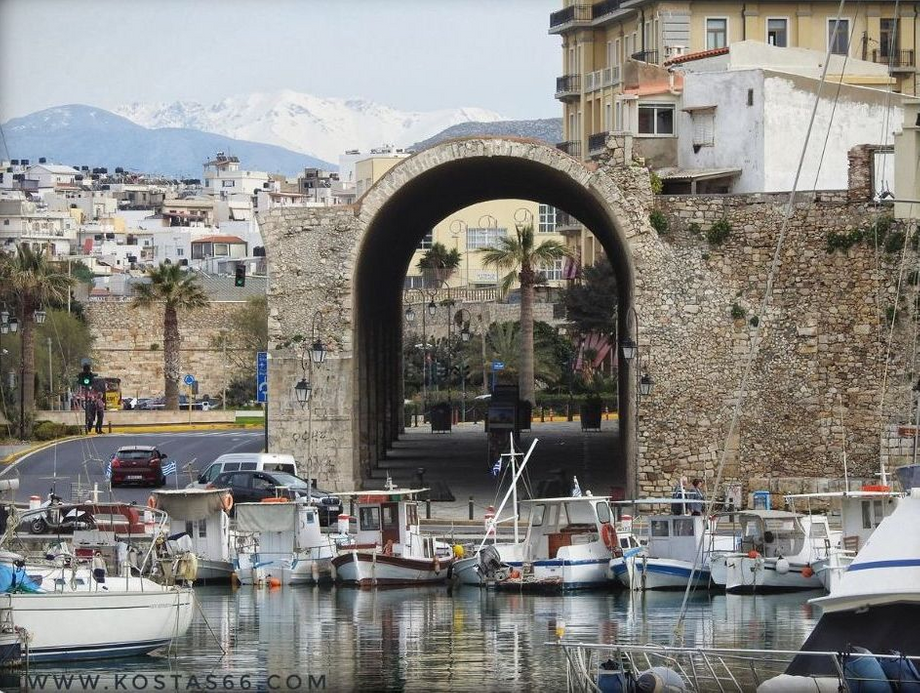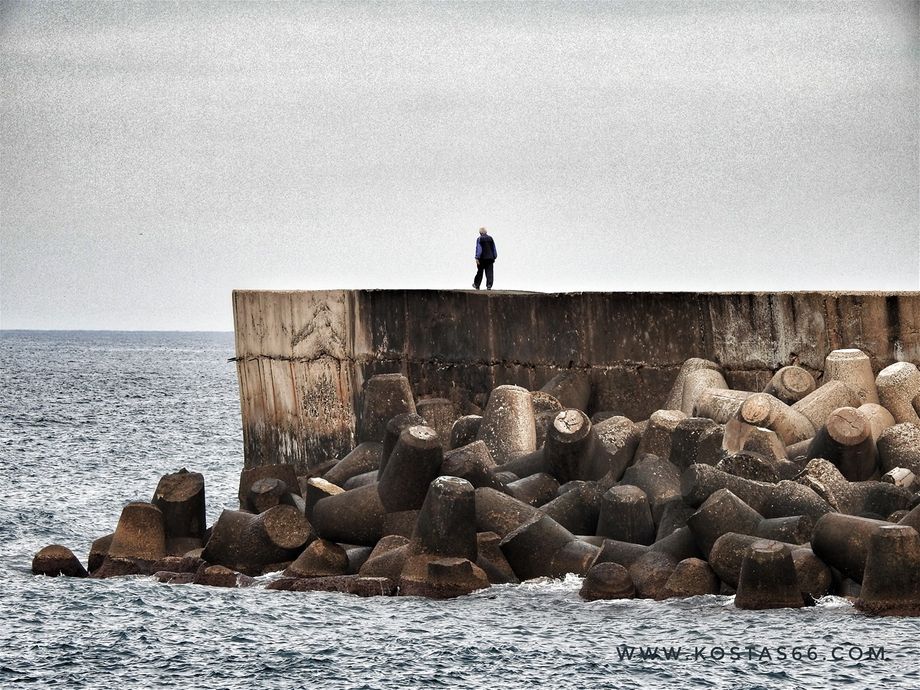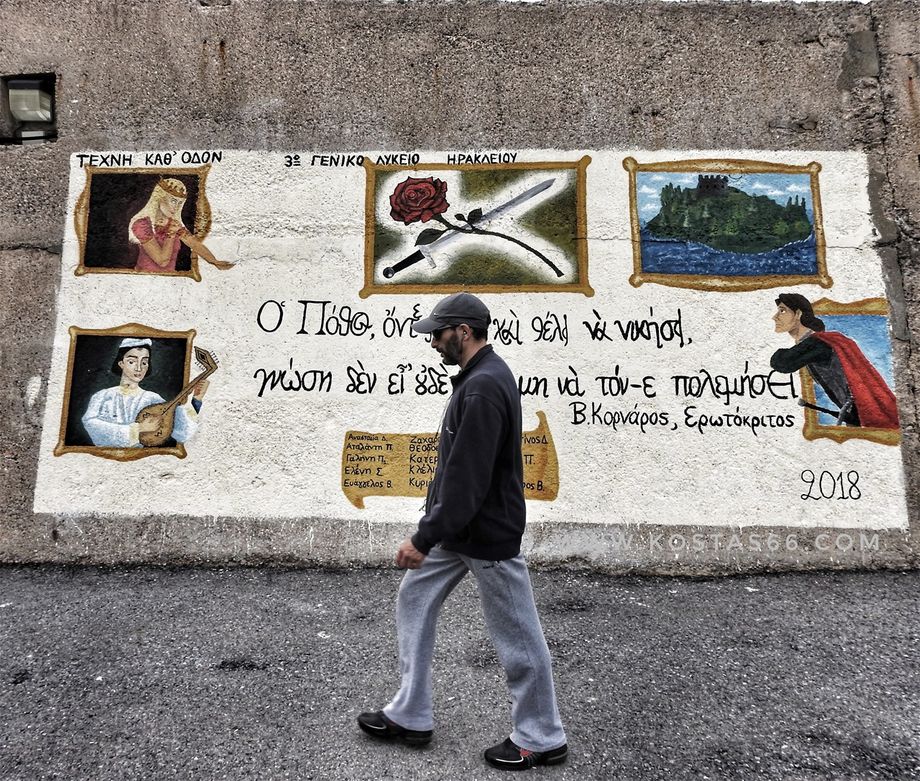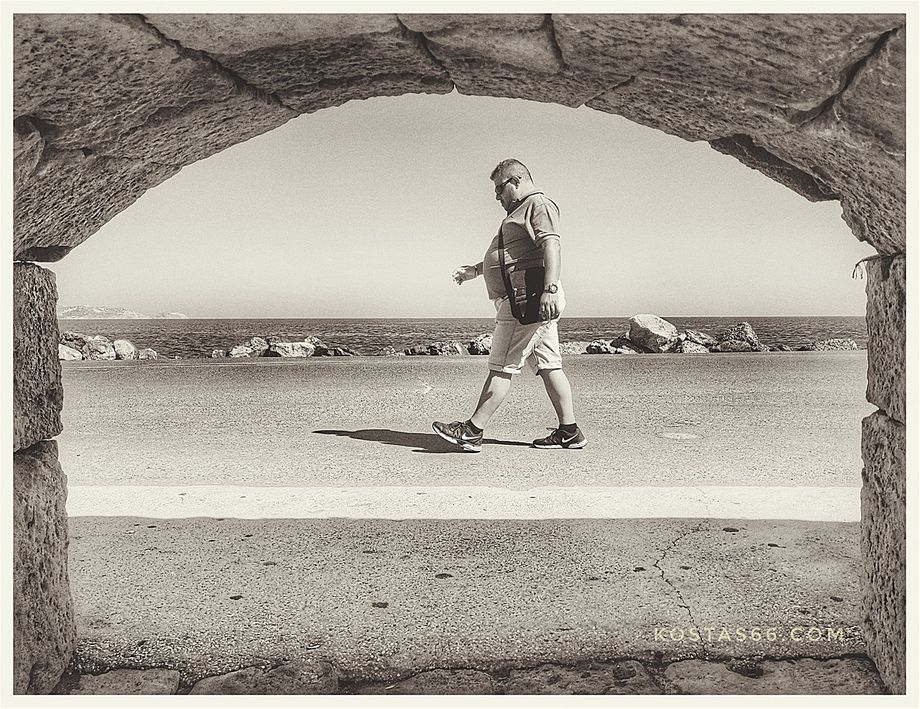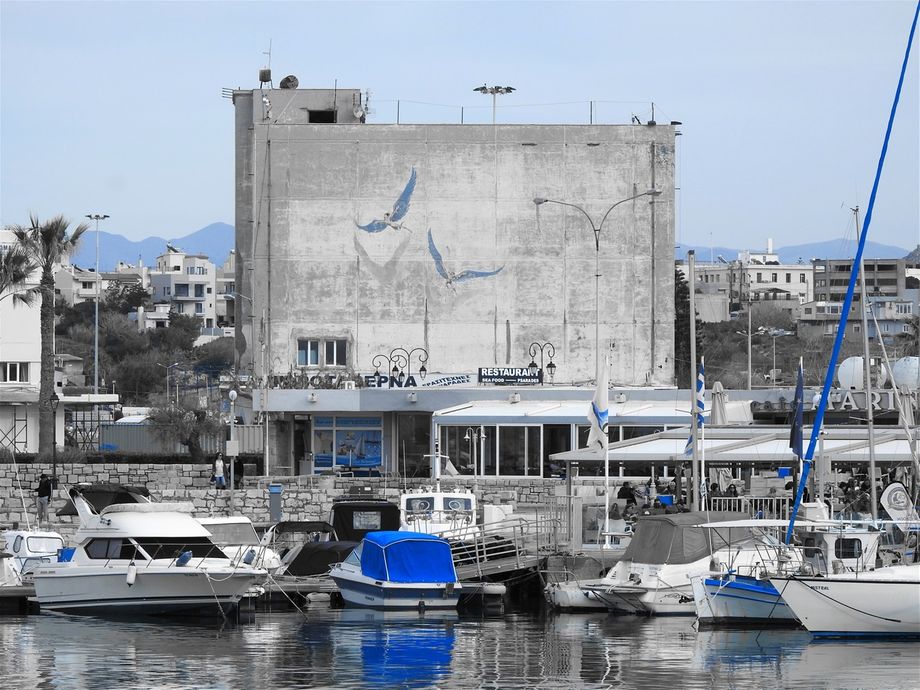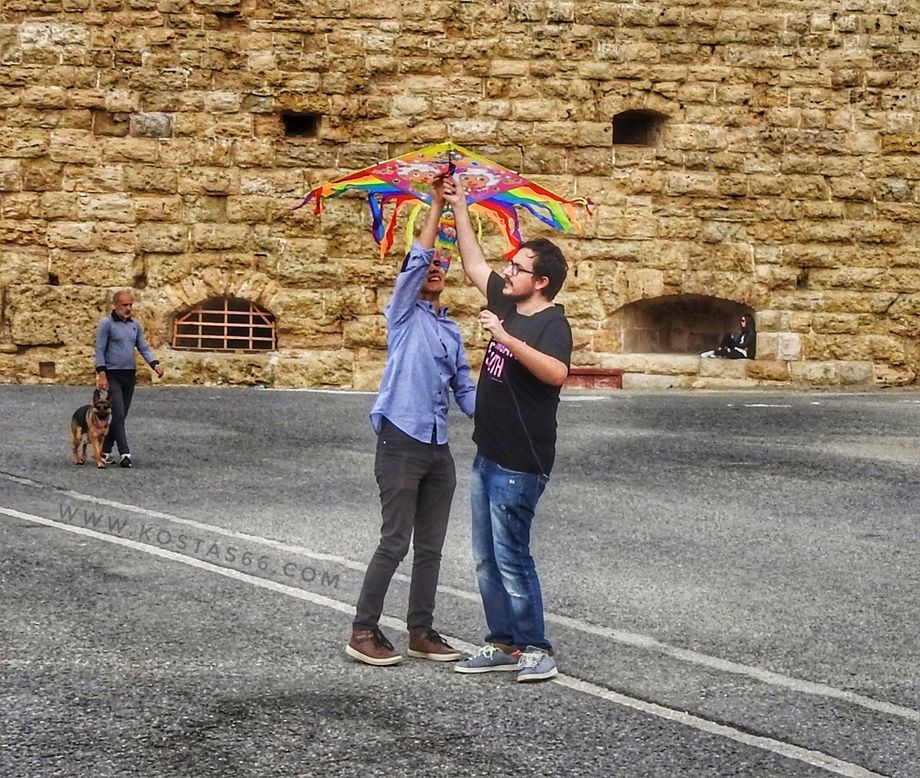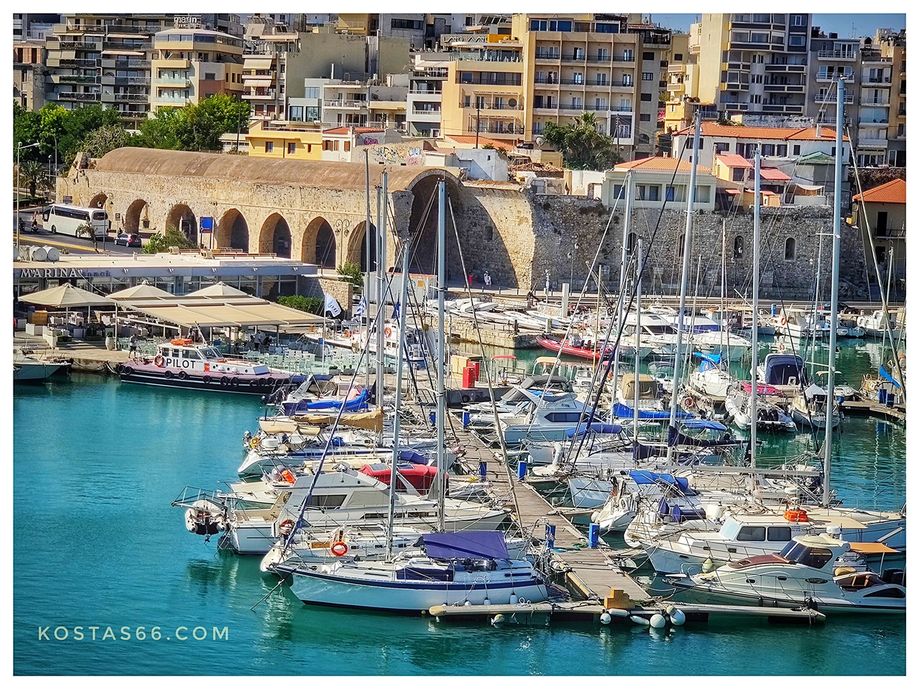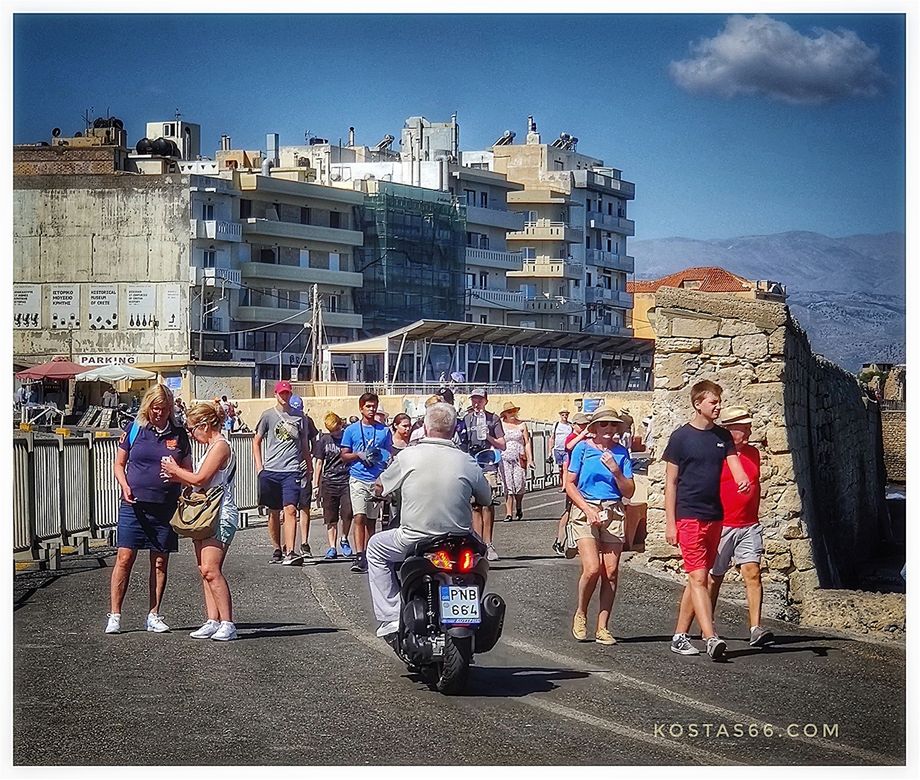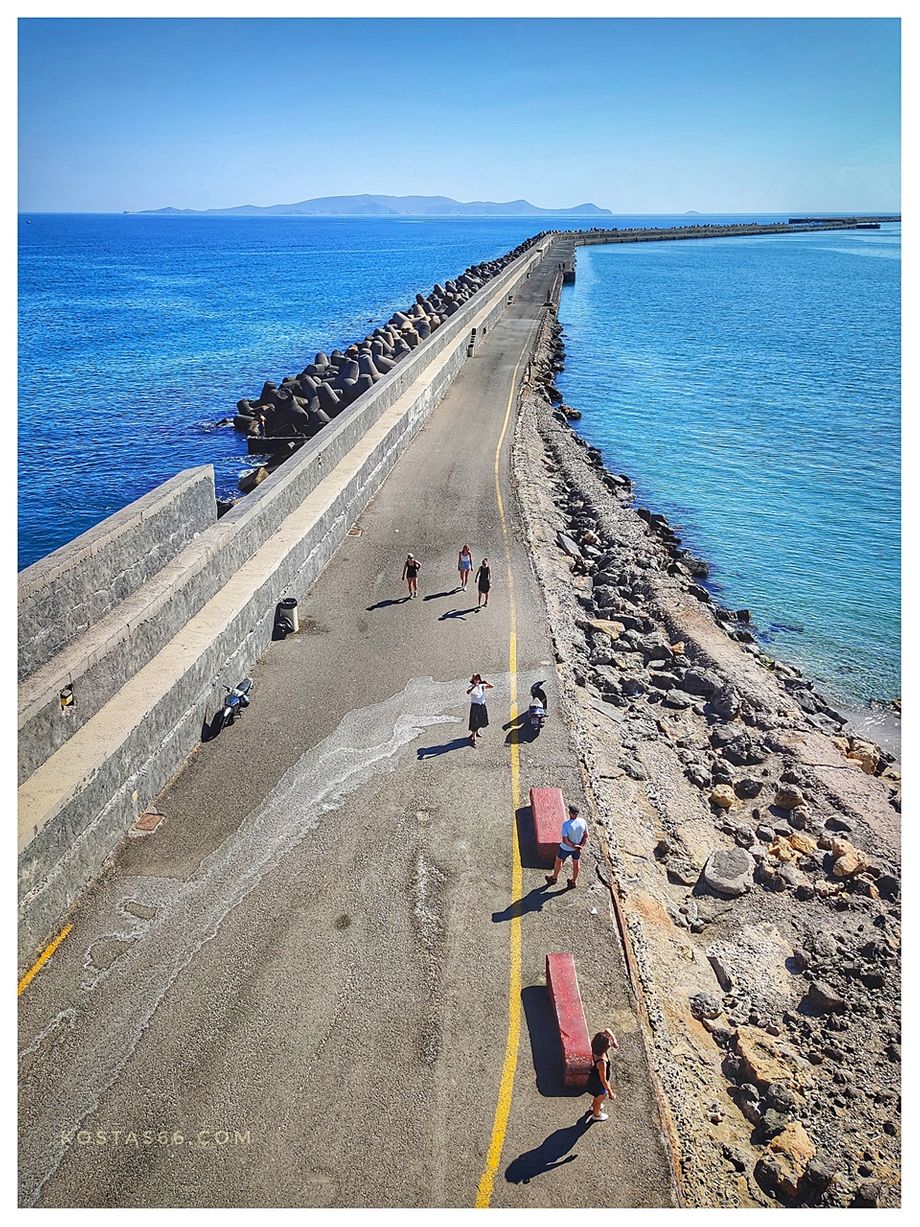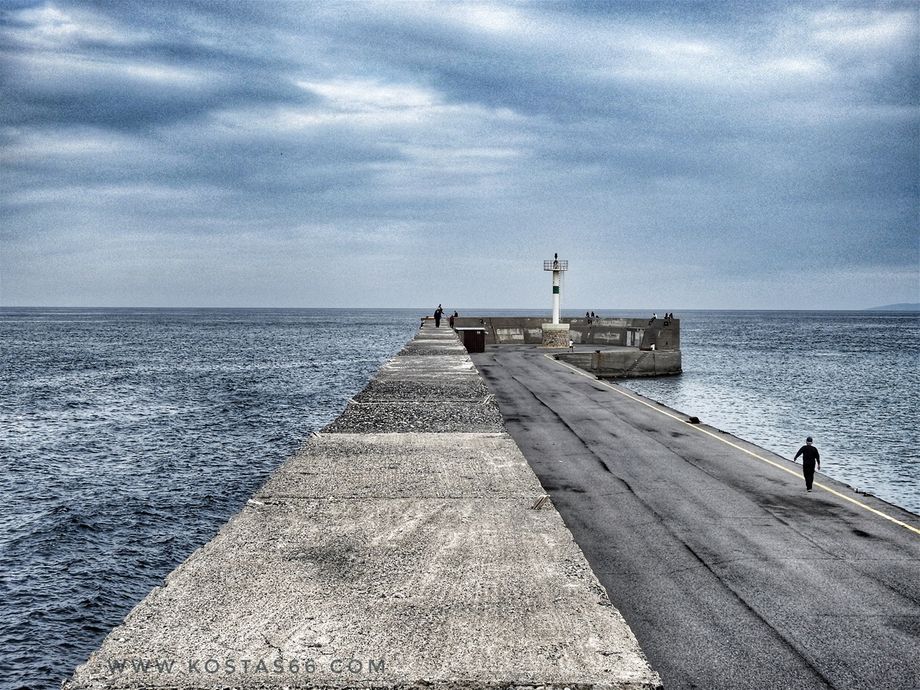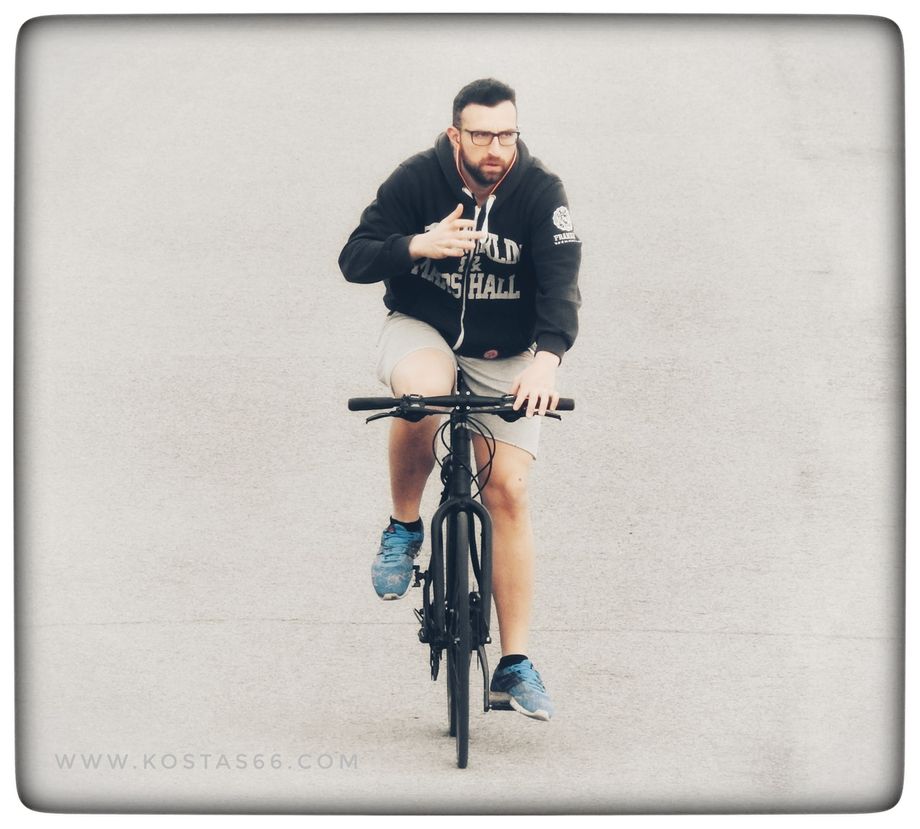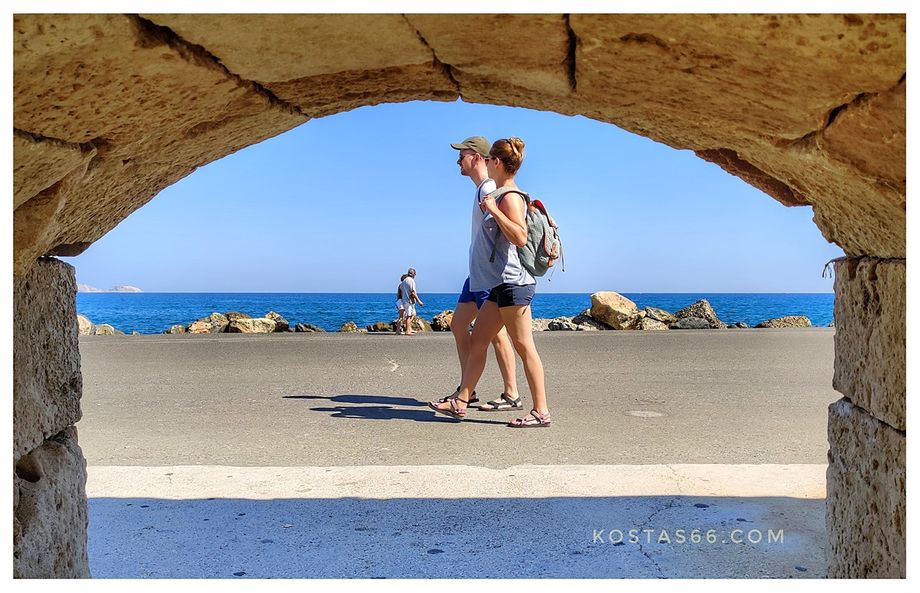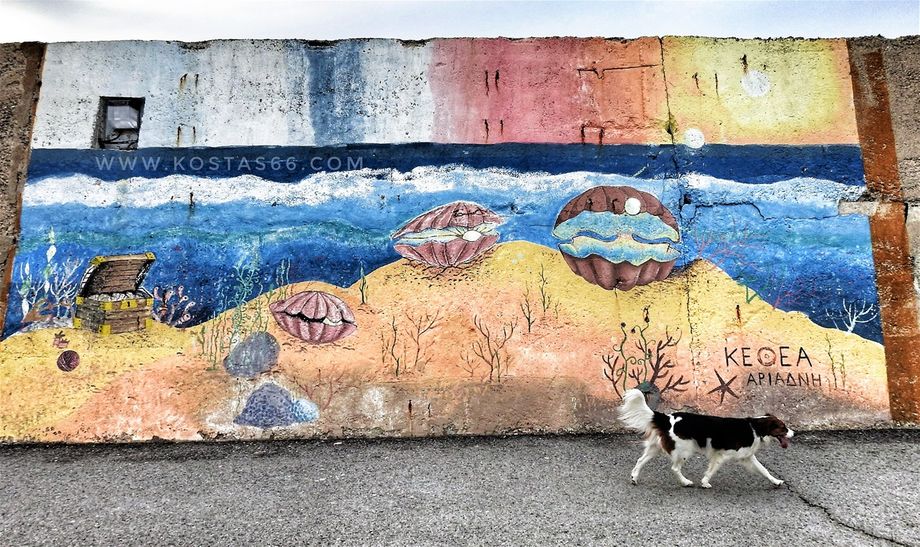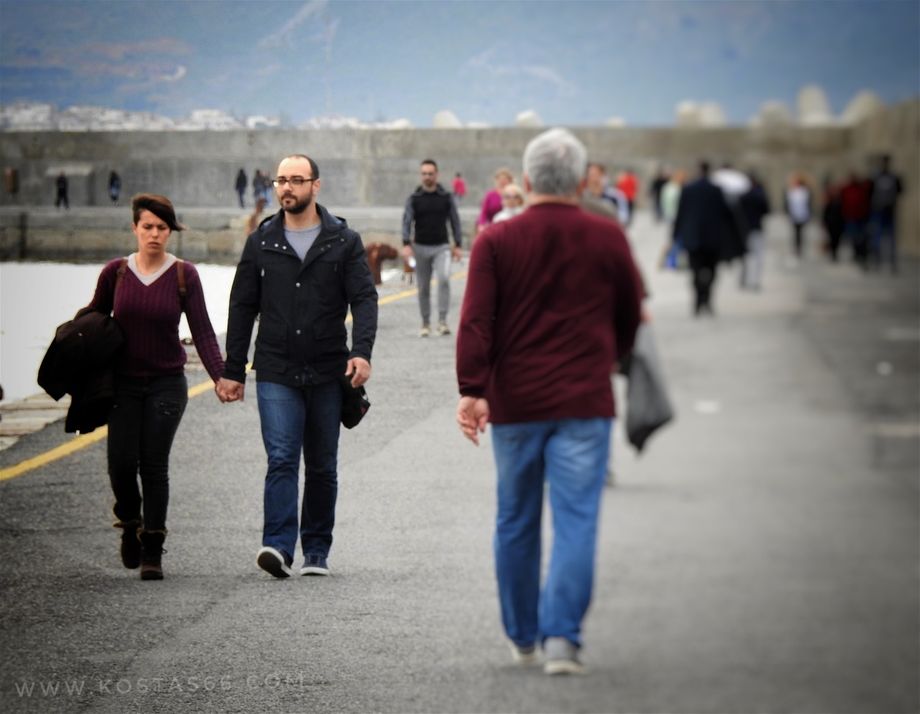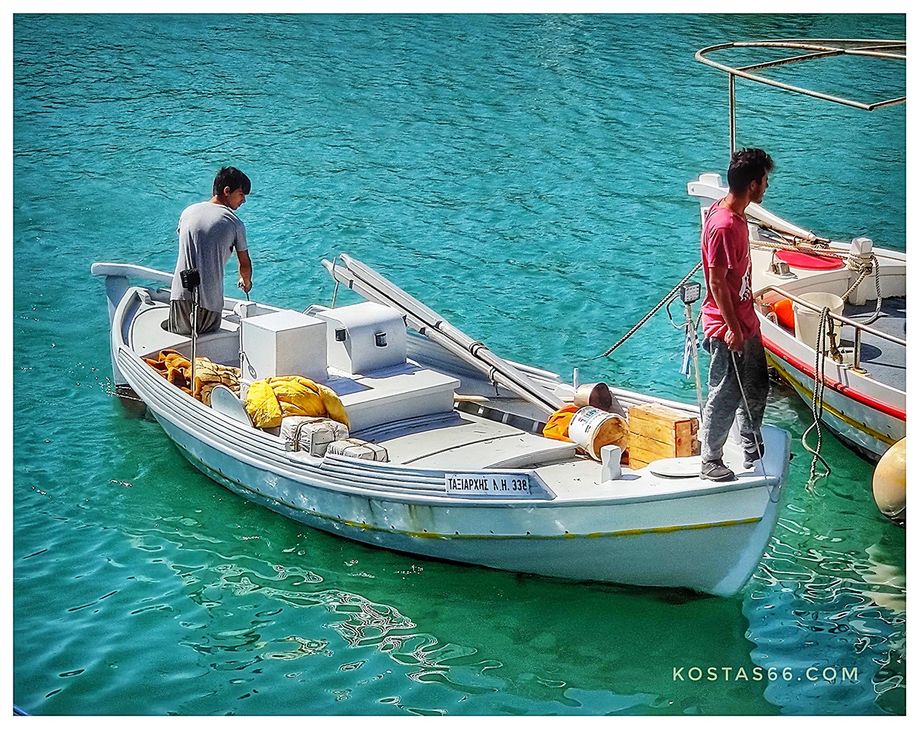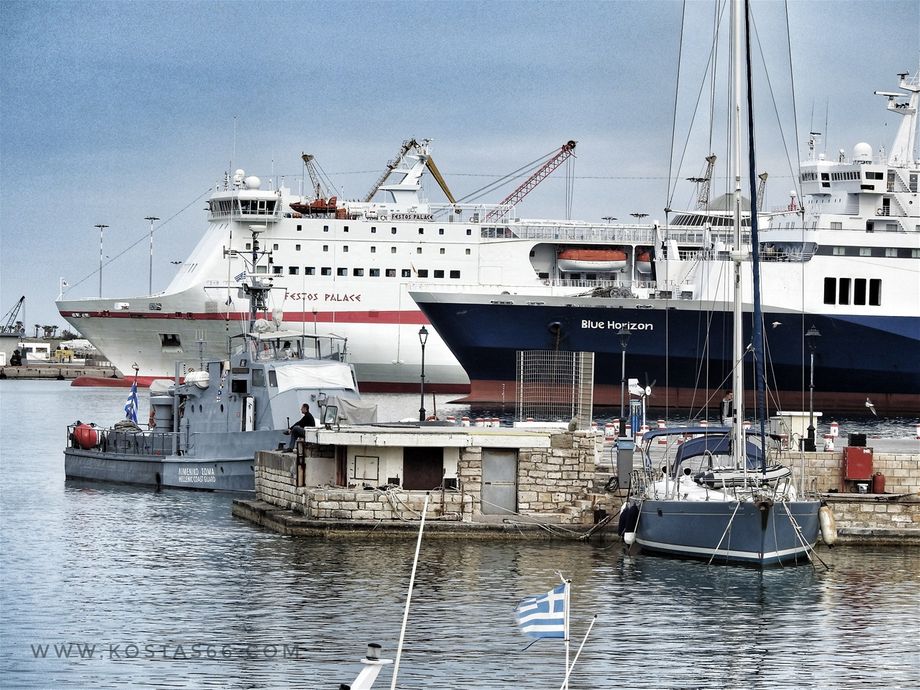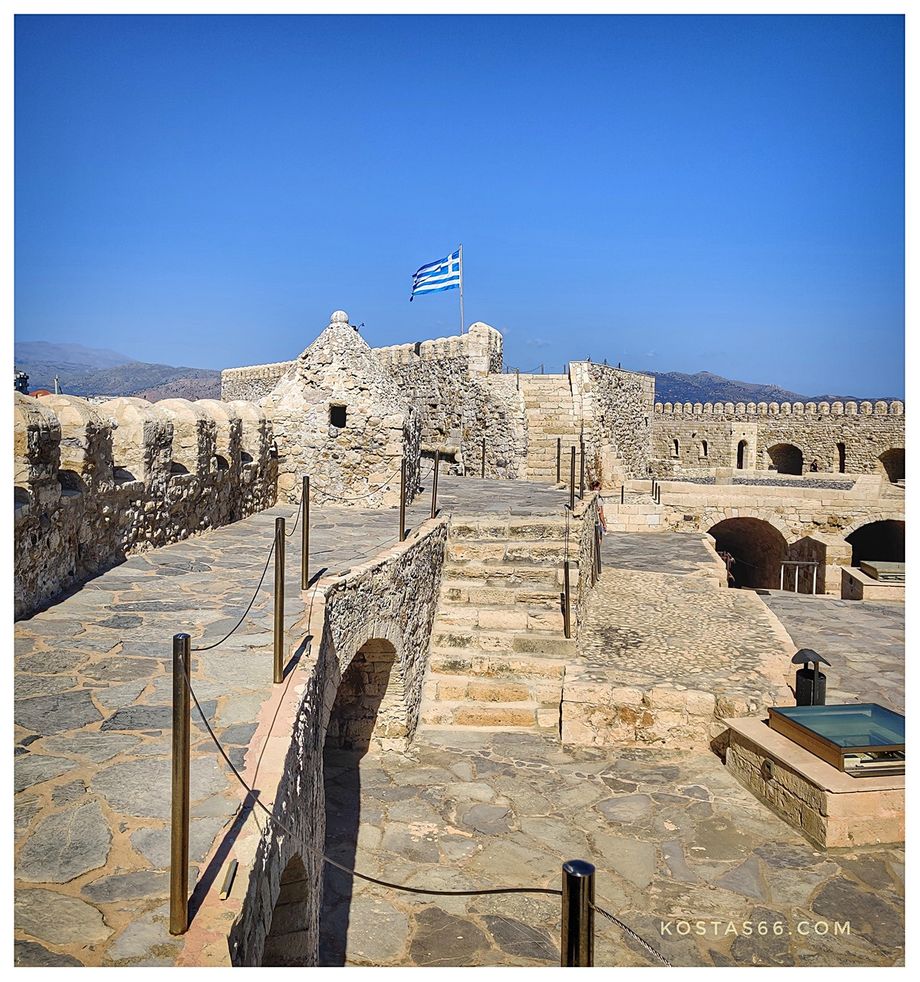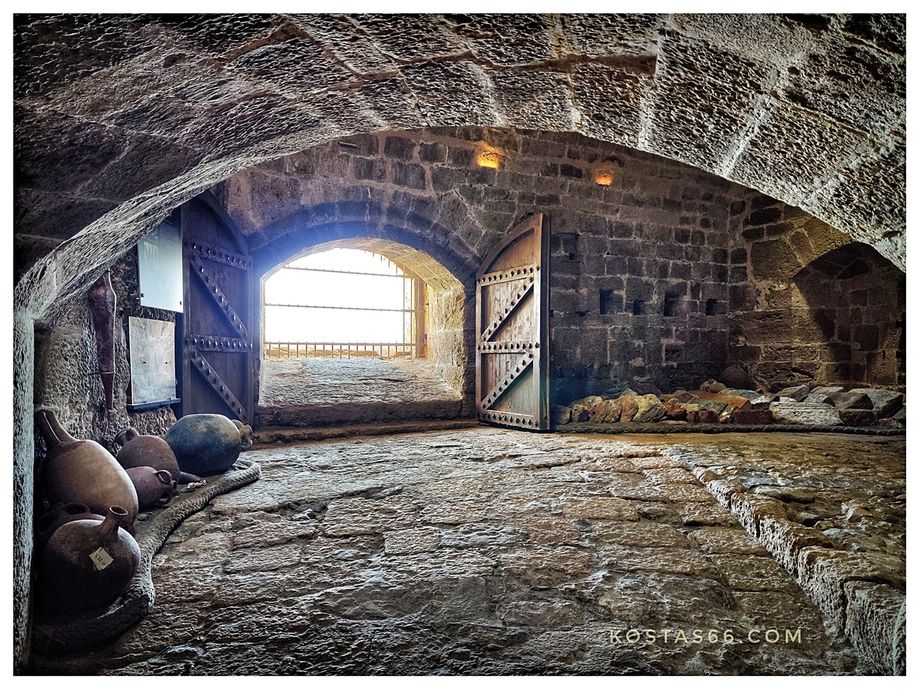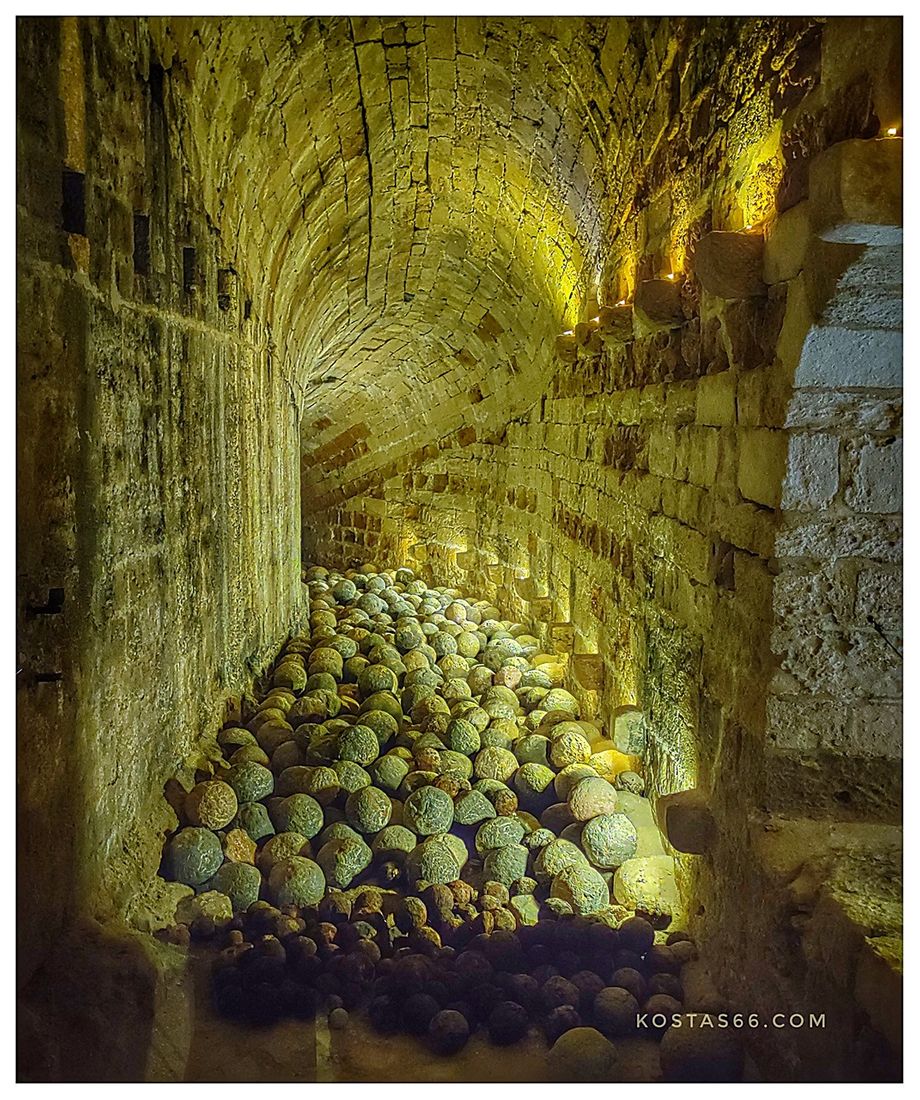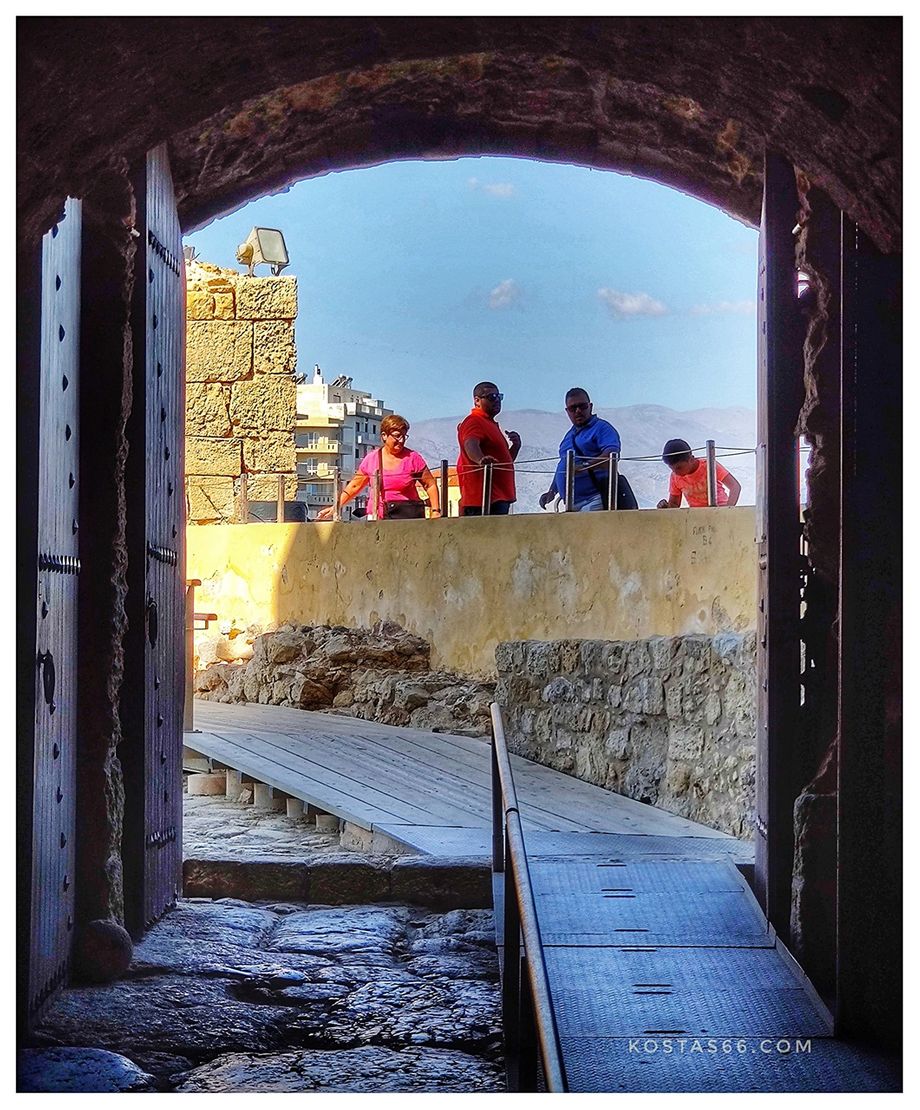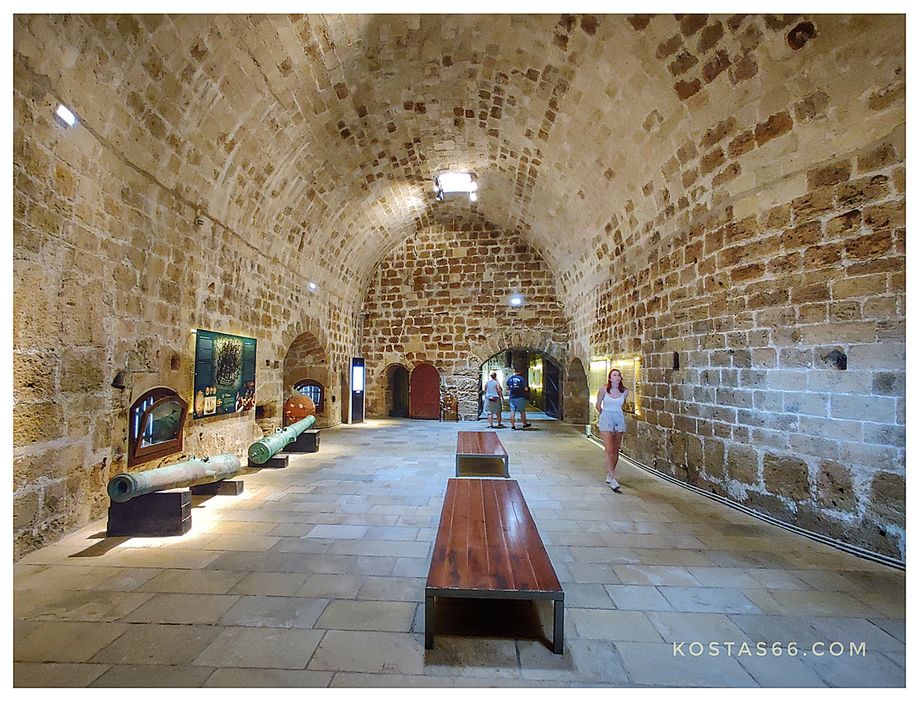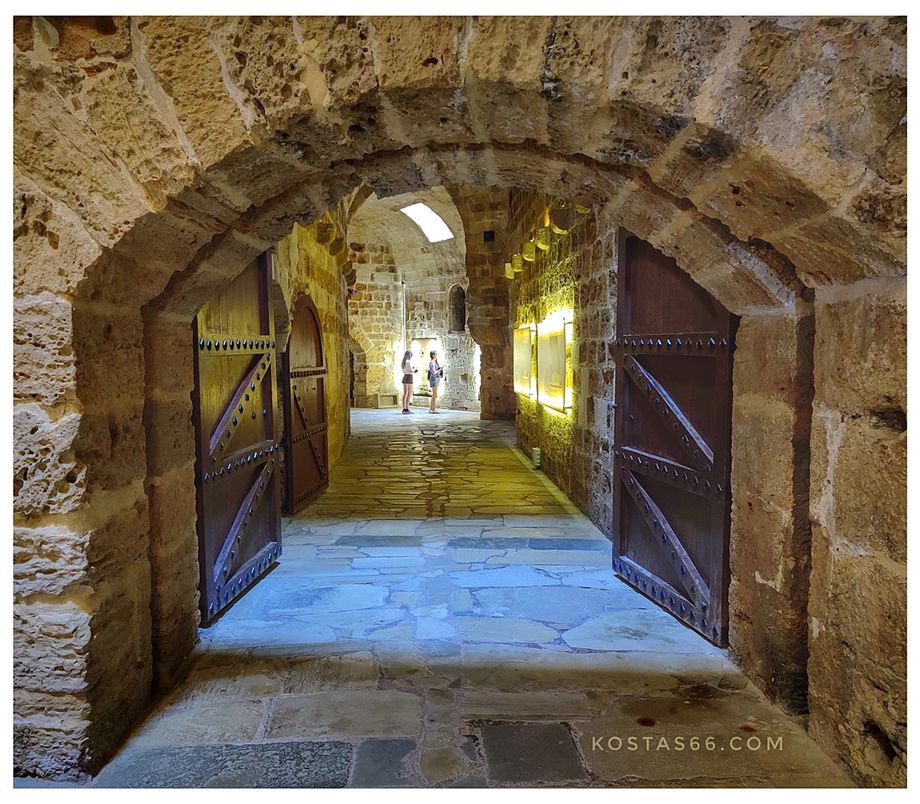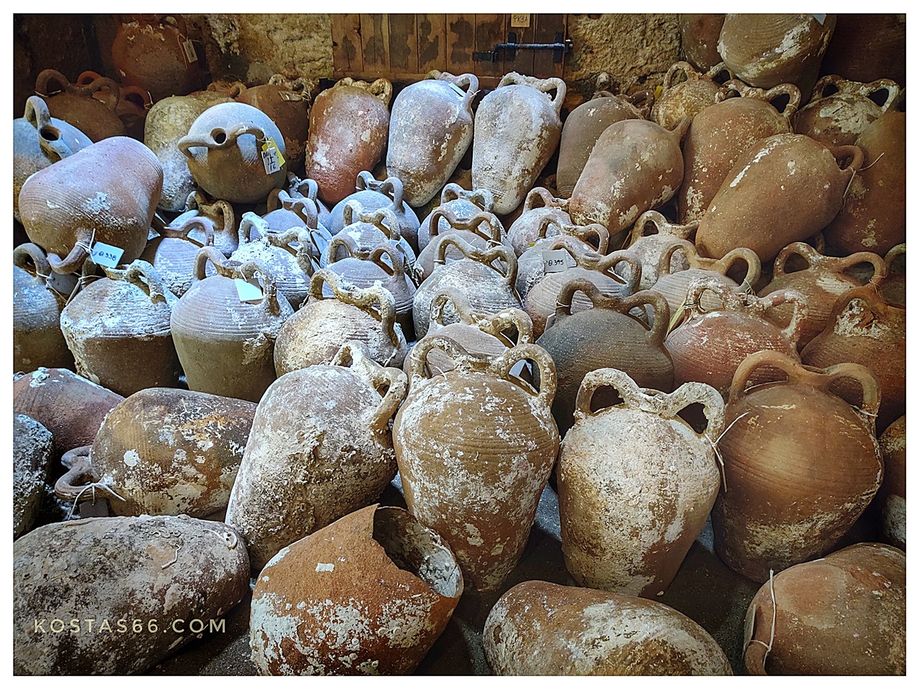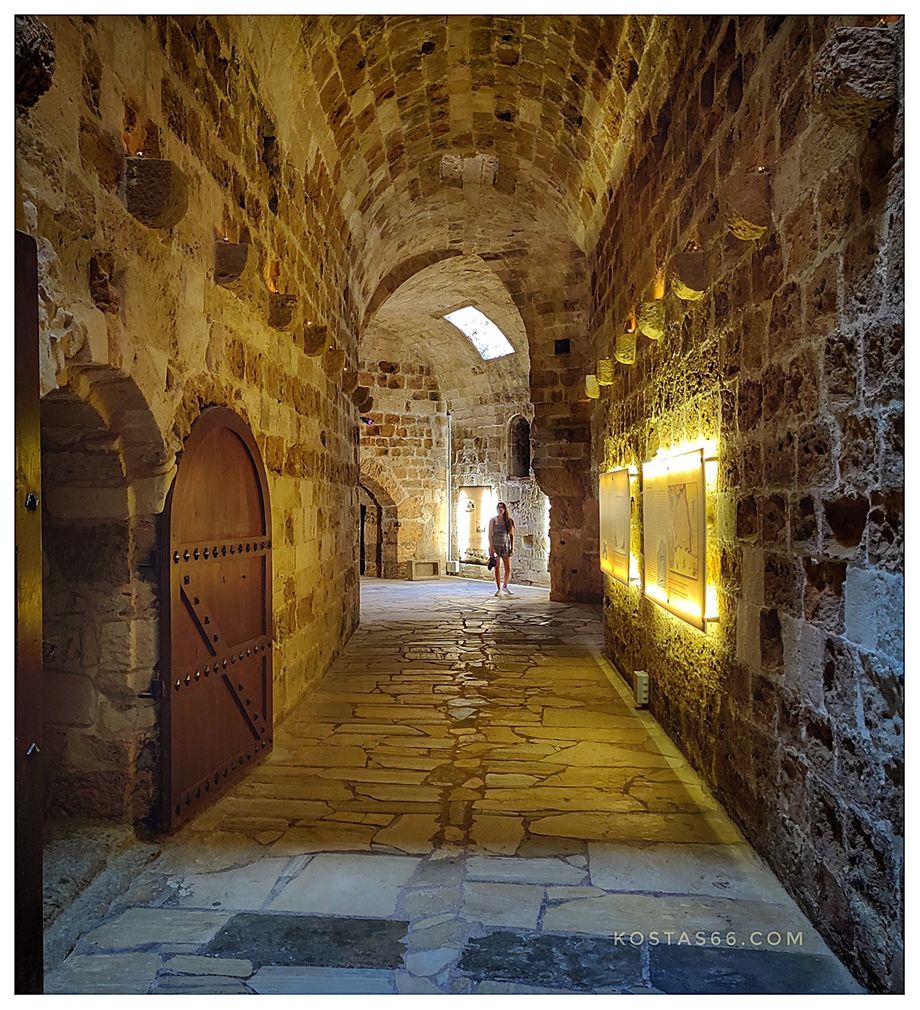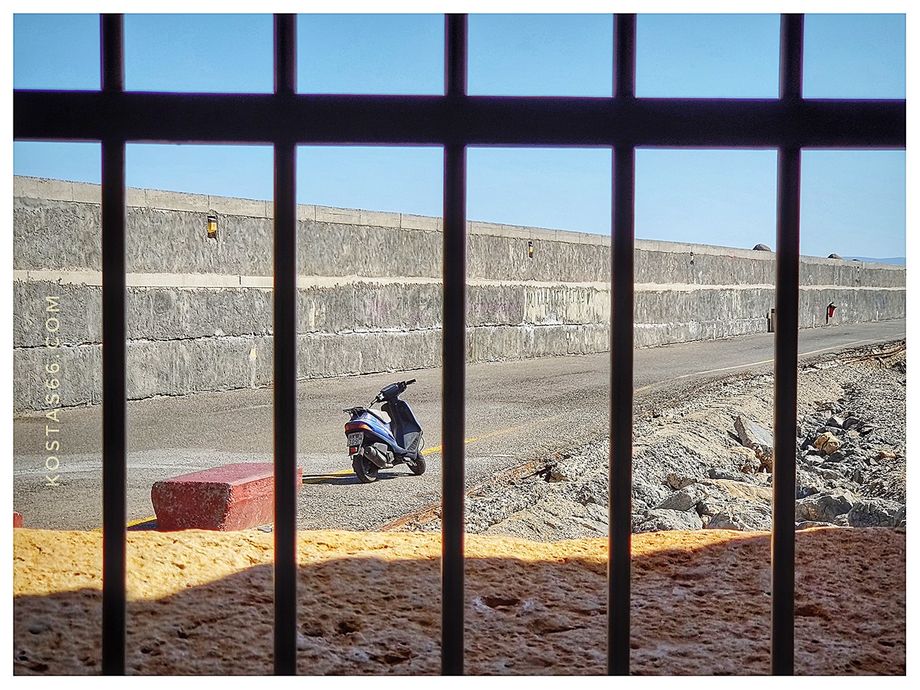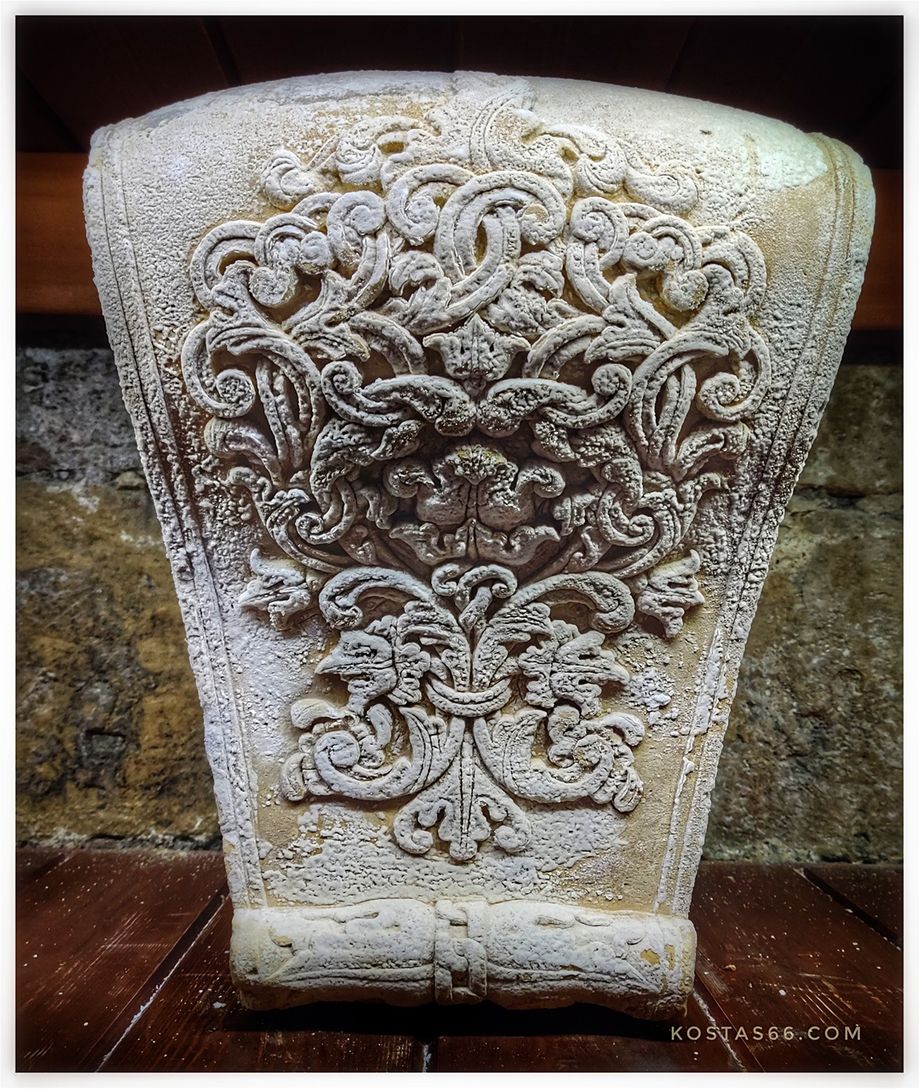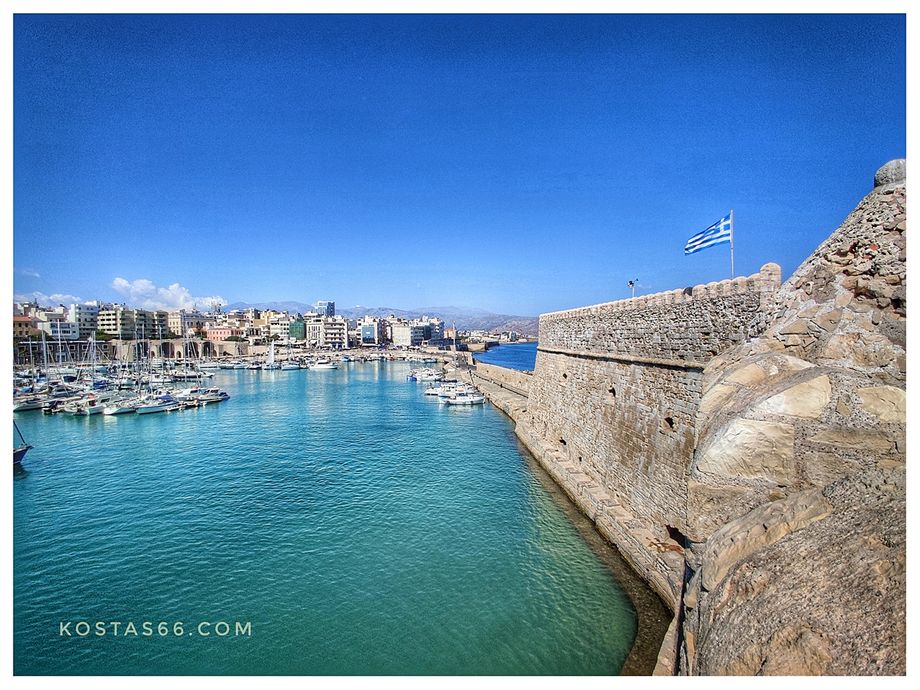Koules fortress,
and the old harbor of Heraklion (Crete)
winter 2019/July 2019
Heraklion (Ηράκλειο) is the biggest city on the island of Crete (Κρήτη). Unlike the other cities on the island, namely Chania and Rethymno, Heraklion is not a beautiful city. I would dare to say it is ugly. The problem is the uncontrolled and anarchic reconstruction of the city during the second half of the 20th century. The city has been expanded to accommodate the continuous increase of population and the hordes of tourists arriving by air or by the sea every year.
The city has some of the most impressive medieval fortification, but almost nothing has been left of the glorious 16th century venetian city itself. The old houses and public buildings have been demolished without an organized plan and tall residential blocks emerged in the narrow, winding streets of the labyrinthian medieval city plan.
Heraklion on the map.
During the last years, an effort has been done to beautify the center of the city and highlight the few old public buildings left. Thus, nice little spots have been emerged here and there and the city center has a relaxed atmosphere, a very rich culinary scene and a coffee culture that can rival any other worldwide.
One of the very few spots of the city, which provide open horizons and gives to the visitor a feeling of freedom, is the old harbor of the city. The western pier of the harbor has been expanded to several kilometers into the sea to protect it from the strong northern winds. The pier is wide and well paved, so people come here not only to admire the open sea or the snow-caped mountains of the island and the city from afar, but also for their daily exercise. The pier is wickedly nicknamed “the road of the heart diseased ones”, because people come here for their daily cardio exercise. So, the pier is full of people walking, riding their bicycle, or just sitting here and there to forget all their daily worries.
The most impressive part of the old harbor is “Koules” or “Castello a Mare” ("Fort on the Sea" in Italian), a fortress located at the entrance of the old harbor, and at what is today the beginning of the long pier. Koules was built by the Republic of Venice in the early 16th century, and is still in good condition today. Today, the fort is known by its Turkish name, Koules, a corruption of Su Kulesi (Water Tower).
The site was possibly first fortified by the Arabs in the 9th or 10th centuries. By the second Byzantine period, a tower known as Castellum Comunis stood on the site. In 1303, the tower was destroyed in an earthquake but was repaired. In 1462, the Venetian Senate approved a programme to improve the fortifications of Candia (Heraklion). Eventually, the Byzantine tower was demolished in 1523, and the Castello a Mare began to be built instead. Old ships were filled with stone, and were sunk to form a breakwater and increase the area of the platform on which the fortress was built. The fortress was completed in 1540. In 1630, the fort was armed with 18 cannons on the ground floor, and 25 cannons on the pathway leading to the roof. During the 21-year long Siege of Candia, Ottoman batteries easily neutralized the fort's firepower. The Ottomans eventually took the fort in 1669, after the Venetians surrendered the entire city. They did not make any major alterations to the fort, except for the additions of some battlements and embrasures. They built a small fort known as Little Koules on the landward side, but this was demolished in 1936 while the city was being modernized. The fortress has been recently restored, and it is now open to the public. Art exhibitions and cultural activities are occasionally held at the fort.

